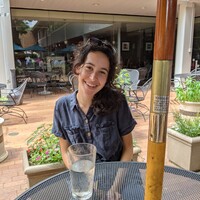The Social Experience and Science of Interracial Marriage in Chicago
Why would a white single man in 1930s Chicago be interested in studying interracial marriage? This is the question that we embarked to find out this summer, as we researched the academic, legal and societal contexts of interracial marriage in Chicago from 1937 - 1967, before the Supreme Court Loving decision which both legalized interracial marriage and increased its visibility. We found that while there may have seemed like a reluctance by the general Chicago public to talk about miscegenation, or race in general, traces of it were everywhere. In sociological scholarship from the time caste was a primary theme, and scholars began to connect interracial relations to caste transcendence. In Chicago courts, sexuality was heavily regulated during the early and mid-1900s during what was seen as a city-wide surge in prostitution. The eugenicist-heavy Municipal Court took advantage of this time to attempt to prosecute interracial marriage, though it was legal in Chicago at the time. And in Chicago society, through newspaper editorials, interracial nightclubs called Black-and-Tan cafés, and literature by Chicago authors such as Richard Wright and Nella Larsen, the public received constant reminders of interracial mingling within the city known for its “color line.”

Comments